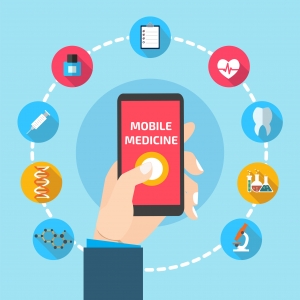
Selecting a provider in healthcare is not too different. We want a provider that we can trust to take care of our major and minor illnesses. We may or may not want a long-term relationship with a doctor depending upon our age, health status, and personality.
Amazon, Apple, and Uber have set the bar for interactive online consumer experiences. The former passive patient has become the active healthcare consumer because they have high deductibles, which means paying more out-of-pocket. The industry skipped over Healthcare Consumer 1.0 just like countries that never had land-line telephones and went directly to cell phones. Healthcare Consumer 2.0 has the same expectations for healthcare services that exist in other industries every day.
Today, in a speeded up world, consumers have expectations of healthcare services that they’ve experienced in other industries. Families are time constrained and challenged to coordinate the schedules of working parents and children’s school and activities. Families crave efficiency. While we look at providers recommended by others, there are a few other necessities listed below that make healthcare more efficient for the consumer.
Basic Provider Features Expected by Healthcare Consumer 2.0
- Ability to book, change, and cancel appointments online
- Renew prescriptions online
- Ask questions through secure email
- Alternatives to in-person office visits (e.g. telehealth, housecalls)
- Treatment by an appropriate clinician, not always a physician
- View complete medical record combined from all providers
- Mobile capability to perform above features
These are not complicated features with the exception of the combined medical record. However, it is surprising to find reports that hospitals have spent millions developing apps for mobile devices that consumers won’t use. Why? Because the apps didn’t include the features listed above. That’s something a little research would have uncovered.
The ability of a hospital or physician practice to provide these functions is critical to Healthcare Consumer 2.0. It is disturbing to see that hospitals reportedly spent millions of dollars developing apps for mobile devices that patients don’t use. A little research into what capabilities consumers want most would easily have avoided developing an app that isn’t useful to the consumer.
Healthcare Consumer 2.0 isn’t a mystery—the new consumers are only new to healthcare, not to other industries. They are looking for the Apple, Amazon, and Uber customer treatment. The consumer is shopping for providers by looking at the features. Once upon a time, air conditioning was an option in cars. Today, it is standard in all new cars. The Basic Features are the new standard for providers who want to do more than survive; they want to thrive in the transformed healthcare ecosystem.
Do you have some or all of these functions? If not, what is your plan for adding them?


Leave A Comment
You must be logged in to post a comment.